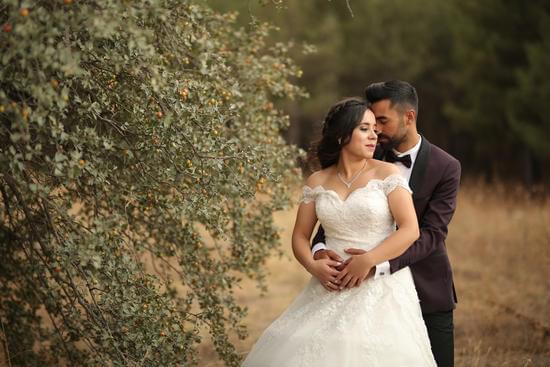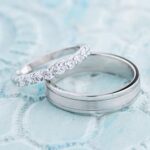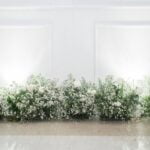What does formal mean for a wedding? When it comes to weddings, the level of formality can set the tone for the entire event. From the dress code to the decor and even the ceremony itself, understanding what “formal” entails is crucial for both hosts and guests. In this article, we will delve into the tradition and etiquette surrounding formal weddings, providing insights and tips on everything from attire to decorum.
When it comes to a formal wedding, tradition and etiquette play a significant role in shaping the event. Understanding what is expected in terms of attire, behavior, and overall aesthetic is key to ensuring that the occasion aligns with the couple’s vision. We will explore these aspects in detail, shedding light on the dos and don’ts that come with hosting or attending a formal wedding.
In the following sections, we will offer advice on choosing the perfect attire for both men and women, as well as navigating the intricate details of formal wedding decorum. From understanding the importance of dress code to selecting invitations that communicate the level of formality, this article aims to provide a comprehensive guide for anyone involved in planning or participating in a formal wedding.
The Importance of Dress Code for a Formal Wedding
The dress code for a formal wedding is an essential aspect of the event, as it sets the tone and atmosphere for the entire celebration. When it comes to understanding what formal means for a wedding, it’s crucial to consider the traditional expectations and etiquette associated with this type of event. In general, formal attire for a wedding encompasses elegant and sophisticated clothing choices that adhere to certain guidelines.
For men attending a formal wedding, a traditional black tuxedo or a dark suit with a crisp white dress shirt and a conservative tie is usually the standard. It’s important to pay attention to small details such as cufflinks, pocket squares, and polished dress shoes to complete the look.
On the other hand, women have more flexibility when choosing their formal attire for a wedding. Floor-length gowns or chic cocktail dresses in classic colors are often appropriate options, accompanied by tasteful accessories and footwear.
Understanding the expectations associated with the dress code for a formal wedding is fundamental not only for guests but also for the bridal party. Bridesmaids and groomsmen should be guided by the couple’s vision and preferences when selecting their attire, always keeping in mind the formality of the occasion.
| Formal Attire Expectations | Etiquette Considerations |
|---|---|
| Tailored suits or tuxedos for men | Respectful attire choices |
| Elegant gowns or cocktail dresses for women | Attention to detail in accessories |
| Bridal party coordination | Respecting couple’s preferences |
Choosing the Perfect Attire for a Formal Wedding
When considering what does formal mean for a wedding, it’s important to understand the expectations for dress code, especially for men. Attending a formal wedding means adhering to a specific level of attire that reflects the elegance and sophistication of the event. Whether you’re a groom, groomsman, or guest, here are some tips and ideas for choosing the perfect attire for a formal wedding:
- Formal Suit: Opt for a classic black tuxedo or a dark-colored suit in navy or charcoal. Ensure that the suit fits perfectly and is tailored to your measurements.
- Dress Shirt: Choose a crisp white dress shirt made from high-quality cotton. A pleated front or wingtip collar adds an extra touch of formality.
- Accessories: Complete your look with a silk bow tie, pocket square, cufflinks, and dress shoes in black or dark brown. Pay attention to details such as the material and finish of these accessories to elevate your ensemble.
When selecting the perfect attire for a formal wedding, it’s essential to consider the time of day and season of the event. For daytime weddings, opt for lighter shades such as light gray or tan suits, while evening affairs call for darker hues. Keep in mind that adhering to the dress code demonstrates respect for the couple getting married and their chosen theme and aesthetic.
Finally, when preparing your outfit for a formal wedding, remember that fit is key. Investing in custom tailoring or alterations will ensure that your attire looks polished and sophisticated. Take the time to try on different options and seek advice from trusted professionals if necessary. By following these tips and ideas, you’ll be well-prepared to make a stylish statement at any formal wedding you attend.
Selecting the Ideal Outfit for a Formal Wedding
When it comes to attending a formal wedding, women often find themselves facing the age-old question of what to wear. The term “formal” can mean different things to different people, but for a wedding, it typically signifies a higher level of elegance and sophistication in attire. So, what does formal mean for a wedding when it comes to women’s fashion?
First and foremost, a formal wedding calls for classic and refined attire. This means opting for floor-length gowns or elegant cocktail dresses that exude grace and style.
When choosing the perfect outfit for a formal wedding, it’s essential to consider the time of day and the venue. For an evening affair at a luxurious ballroom, a lavish gown with intricate details and embellishments would be fitting, while a daytime ceremony in a garden setting may call for a lighter-colored dress with minimal embellishments.
In terms of color choices for formal weddings, it’s customary to steer clear of white or ivory out of respect for the bride. Instead, rich jewel tones or sophisticated neutrals like navy, black, or deep burgundy are excellent options.
Additionally, paying attention to fabric choices is crucial – luxe materials such as silk, satin, chiffon, or lace can elevate the formality of your ensemble. Ultimately, striking the right balance between timeless elegance and personal style is key when selecting the ideal outfit for a formal wedding as a woman.
Navigating the Dos and Don’ts of Formal Wedding Decorum
When it comes to a formal wedding, understanding the dos and don’ts of decorum is essential for both the couple and their guests. This section will delve into the etiquette and expectations surrounding formal weddings to ensure that everyone is able to navigate this special occasion with grace and respect.
The Importance of Proper Behavior
Understanding what formal means for a wedding goes beyond just attire. It also encompasses the behavior and conduct of all those attending. This includes being punctual, following seating arrangements, refraining from inappropriate conversations or behaviors, and showing respect for cultural or religious traditions that may be part of the wedding ceremony.
Formal Wedding Decorum Dos
There are certain etiquettes that should be observed to maintain a sense of formality at a wedding. This includes RSVPing in a timely manner, adhering to the dress code specified on the invitation, bringing an appropriate gift for the couple, offering congratulations and well-wishes in person, and engaging in polite conversation with fellow guests.
Formal Wedding Decorum Don’ts
On the flip side, there are also certain behaviors that should be avoided at a formal wedding. This includes being late to the ceremony or reception, dressing inappropriately for the formality level specified by the couple, being overly loud or disruptive during key moments such as speeches or vows, bringing uninvited guests, and engaging in any behavior that could be deemed disrespectful or inappropriate. These guidelines are important to uphold the elegance and sophistication expected at a formal wedding.
The Role of Invitations in Communicating the Formality of a Wedding
When it comes to planning a wedding, the invitation sets the tone for the event and conveys important information to your guests. For a formal wedding, the design and wording of the invitation are crucial in communicating the level of formality that is expected. Here are some key considerations when it comes to using invitations to convey the formality of your wedding:
- Wording: The language used in the invitation should reflect the formal nature of the event. Traditional phrases such as “Mr. and Mrs.” instead of “John and Jane” and “request the honor of your presence” instead of “invite you to” can convey a sense of formality.
- Design: The design of the invitation can also signal a formal event. Consider using high-quality paper, classic fonts, and traditional motifs such as elegant borders or monograms.
- Details: Pay attention to details such as proper spelling, punctuation, and formatting on the invitation. These elements contribute to a polished and formal presentation.
In addition to conveying formality, the invitation also provides essential information about dress code, which is particularly important for a formal wedding. Including specific attire instructions on the invitation can help guests understand what is expected of them.
Ultimately, when it comes to planning a formal wedding and using invitations to communicate its level of formality, every detail matters. From wording and design to dress code instructions, each element plays a part in setting the tone for an elegant and sophisticated event that will be remembered for years to come.
Planning a Formal Wedding
When planning a formal wedding, there are key considerations that should be taken into account in order to achieve the desired atmosphere of elegance and sophistication. From the venue to the decor and theme, each aspect plays an important role in shaping the overall ambiance of the event.
Choosing the Venue
One of the most crucial decisions when planning a formal wedding is selecting the right venue. A formal wedding often calls for a grand and luxurious setting, such as a stately mansion, historical ballroom, or upscale hotel. The architecture and ambiance of the venue should reflect the formality of the occasion, providing a sense of opulence and grandeur.
Designing the Decor
The decor for a formal wedding should exude an aura of timeless luxury and sophistication. This may involve incorporating opulent elements such as crystal chandeliers, ornate candelabras, and lush floral arrangements. Elegant drapery, fine linens, and luxurious table settings can also contribute to creating a formal and refined atmosphere.
Setting the Theme
In addition to choosing the right venue and designing the decor, setting a cohesive theme can further enhance the formality of a wedding. Classic themes such as black-tie affair or vintage glamour are popular choices for formal weddings. By integrating thematic elements into every aspect of the event – from invitations to attire to music – couples can ensure that their vision of a formal wedding is fully realized.
By carefully considering these key aspects – choosing an appropriate venue, designing elegant decor, and setting a cohesive theme – couples can successfully plan and execute a formal wedding that reflects their desired level of sophistication and refinement. Ultimately, attention to detail in every aspect will contribute to creating an atmosphere that befits this special occasion in an unforgettable way.
How to Achieve a Formal Wedding Aesthetic
Achieving a formal wedding aesthetic is all about incorporating elegance and sophistication into every detail of the event. This means paying attention to not only the attire of the wedding party and guests, but also the venue, decor, and overall theme. When it comes to what does formal mean for a wedding, it’s crucial to consider how each aspect of the celebration contributes to the desired formal atmosphere.
One of the key elements in achieving a formal wedding aesthetic is selecting an appropriate venue. This could be a grand ballroom, an elegant country club, or a historic mansion. The setting should exude a sense of refinement and luxury, providing a sophisticated backdrop for the ceremony and reception.
In terms of decor, fine details play a crucial role in creating a formal ambiance. This can include elaborate floral arrangements, ornate table settings, and luxurious linens. Incorporating elements such as crystal chandeliers, candlelit centerpieces, and gilded accents can add an extra touch of opulence to the overall aesthetic.
| Aspect | Description |
|---|---|
| Venue | Selecting an impressive location such as grand ballrooms or historic mansions is important for creating a formal wedding aesthetic. |
| Decor | Incorporating intricate details like elaborate floral arrangements, ornate table settings, and luxurious linens can enhance the sophistication of a formal wedding. |
Beyond the Attire
In conclusion, when it comes to understanding what formal means for a wedding, it is essential to consider every aspect of the event. From the dress code and attire to the decor, invitations, and overall wedding aesthetic, formality encompasses a wide range of elements that contribute to the overall tone of the celebration.
The formal nature of a wedding extends beyond just the attire worn by the couple and their guests. It also includes the ceremony and reception. For a formal ceremony, traditional rituals and customs may be incorporated, such as specific readings or religious practices.
The venue itself can also contribute to the formality of the event, with grand churches or elegant ballrooms often chosen for formal ceremonies. Similarly, formal receptions may include sit-down dinners with multiple courses, structured speeches, and orchestrated dances that adhere to traditional etiquette.
Furthermore, beyond the attire and ceremonial aspects of a formal wedding lies an emphasis on sophistication and elegance. From luxurious floral arrangements and opulent table settings to refined entertainment options such as string quartets or live bands, every detail is carefully curated to exude an air of refinement and grace. Ultimately, understanding what formal means for a wedding involves embracing tradition while also incorporating personal touches that reflect the style and personality of the couple tying the knot.
Frequently Asked Questions
What Is a Formal Attire for a Wedding?
Formal attire for a wedding typically refers to traditional and elegant clothing, such as a tuxedo or dark suit for men, and a floor-length gown or dressy cocktail dress for women. It’s important to adhere to the dress code specified by the couple getting married, as some weddings may require black tie attire.
What Makes a Wedding Formal?
A wedding is considered formal based on factors such as the venue, time of day, and overall level of sophistication. Formal weddings often take place in venues such as upscale hotels, grand ballrooms, or historic estates. Evening ceremonies and receptions also contribute to the formality of the event.
Does a Man Have to Wear a Suit to a Formal Wedding?
While it’s customary for men to wear a suit or tuxedo to a formal wedding, there may be some flexibility depending on the specific dress code stated on the invitation. If the invitation calls for “black tie optional,” men have the choice between wearing a tuxedo or a dark suit with a conservative tie.
Ultimately, it’s important for men to respect and adhere to the requested dress code while still feeling comfortable and confident in their attire.

I have been involved in marriages for over 20 years helping couples and singles understand more about them.





